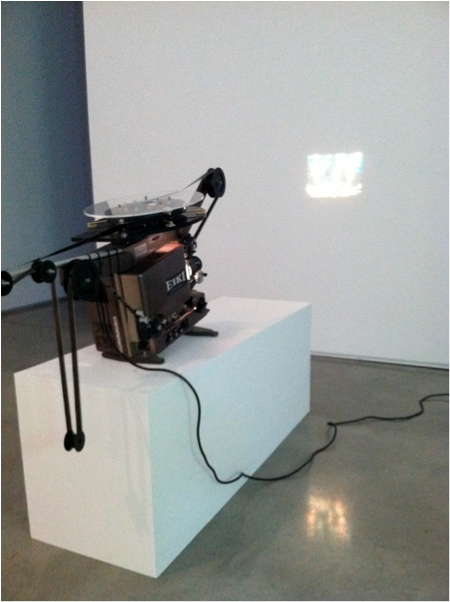Lori Emerson is an Assistant Professor in the Department of English at the University of Colorado Boulder. She writes on and teaches electronic literature (especially digital poetry), experimental American and Canadian poetry from the 20th and 21st century, history of computing, and media theory. In addition to curating the Archeological Media Lab, she is currently working on two book projects. The first is Reading Writing Interfaces: From the Bookbound to the Digital and the second is The Johns Hopkins Guide to Digital Media and Textuality, co-edited with Marie-Laure Ryan and Benjamin Robertson. Finally, Emerson is an Associate Editor for the Electronic Book Review.
Media Archaeology as an Instance of Remix
Genetic sequencing and data mining have taken over from all those quaint old pastimes such as expression or representation. Alexander Galloway, “What You See is What You Get?”
The strength, and perhaps the drawback, of ‘remix’ is that it can describe and account for nearly every emerging digital practice – whether net art, literature, music, film, criticism, or even just the more benign act of surfing the net (as we liked to call it in the 90s) to accumulate or piece together, to patchwork a worldview out of bits of information. While there are abundant precedents for the practice of remix, extending well beyond the 20th century, the widespread adoption of the digital computer – which itself remixes as it samples, reads, and then writes depending on what it reads – undoubtedly accelerated this cultural turn to the remix. But what I want to suggest here is that remix depends upon particular material parameters of the technology used to remix – we can observe not just that remix was further ushered in by the tape machine and then pushed even further by the digital computer, but that the how of the mechanism of remix has fundamentally affected the what – the resulting remixed product. In other words, a remix using electromagnetic tape is fundamentally different from one created from Internet searches or even cutting and pasting. And so in this way it seems useful to introduce Media Archaeology as a means to both divide up the expansive area encompassed by remix and better attend to these vastly different material bases of remix.
For Geert Lovink, Media Archaeology does not try to escape the vantage of the digital present to get to an untainted understanding of the analog past. Rather, it reads the digital into or even against the past, uncovering a history of stops and starts, overlapping media eruptions. The study of media history no longer needs to involve uncovering a teleological, static series of inventions. Instead, in the spirit of Michel Foucault’s notion of the archive as a “system of statements (whether events or things)” – with emphasis on “system” instead of the usual stress on “statements” – media history can be conceived of as a shifting practice of uncovering the ways in which media themselves, in a very physical, concrete sense, engender and delimit what can be said, what can be thought.
As such, Media Archaeology is less concerned with a Foucaultian emphasis on power in social relationships and more concerned with the ways in which computer hardware – and for me, it is a concern that can be extended to any media, including the electromagnetic tape I mention above – exerts power over communication. And insofar as this Foucaultian notion of the archive is at the heart of Media Archaeology, it’s worth pointing out that it brings to light the fact that remix is also not possible without seeing all of the information world not only as an archive but as an open archive from which one remixes by digging and sorting through information trash, waste, discarded data. Insofar as anyone creates or writes anymore, one is actually choosing from or curating the archive of culture. How one chooses and curates is our new expression.
Pierre Bismuth’s “Retroprojector” (2011): 16 mm film transfer projection of CNN’s televised evening coverage of the 2008 Presidential election






